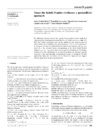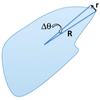issue contents
September 2011 issue

Cover illustration: Polar mode GM6 (left) and antiferrodistortive mode M3-1q (right) present in the monoclinic structure of SrAl2O4, together with a graph of maximal subgroups showing their isotropy subgroups. The amplitude of mode GM6 is much larger, and ab initio calculations confirm its soft character, while distortion M3-1q is a hard mode frozen as an induced secondary distortion [Perez-Mato et al. (2010). Acta Cryst. A66, 558-590]. The mode figures were drawn using FullProf Studio [Rodriguez-Carvajal (1993). Physica B, 192, 55-69].
research papers
 access
access

 journal menu
journal menu


























